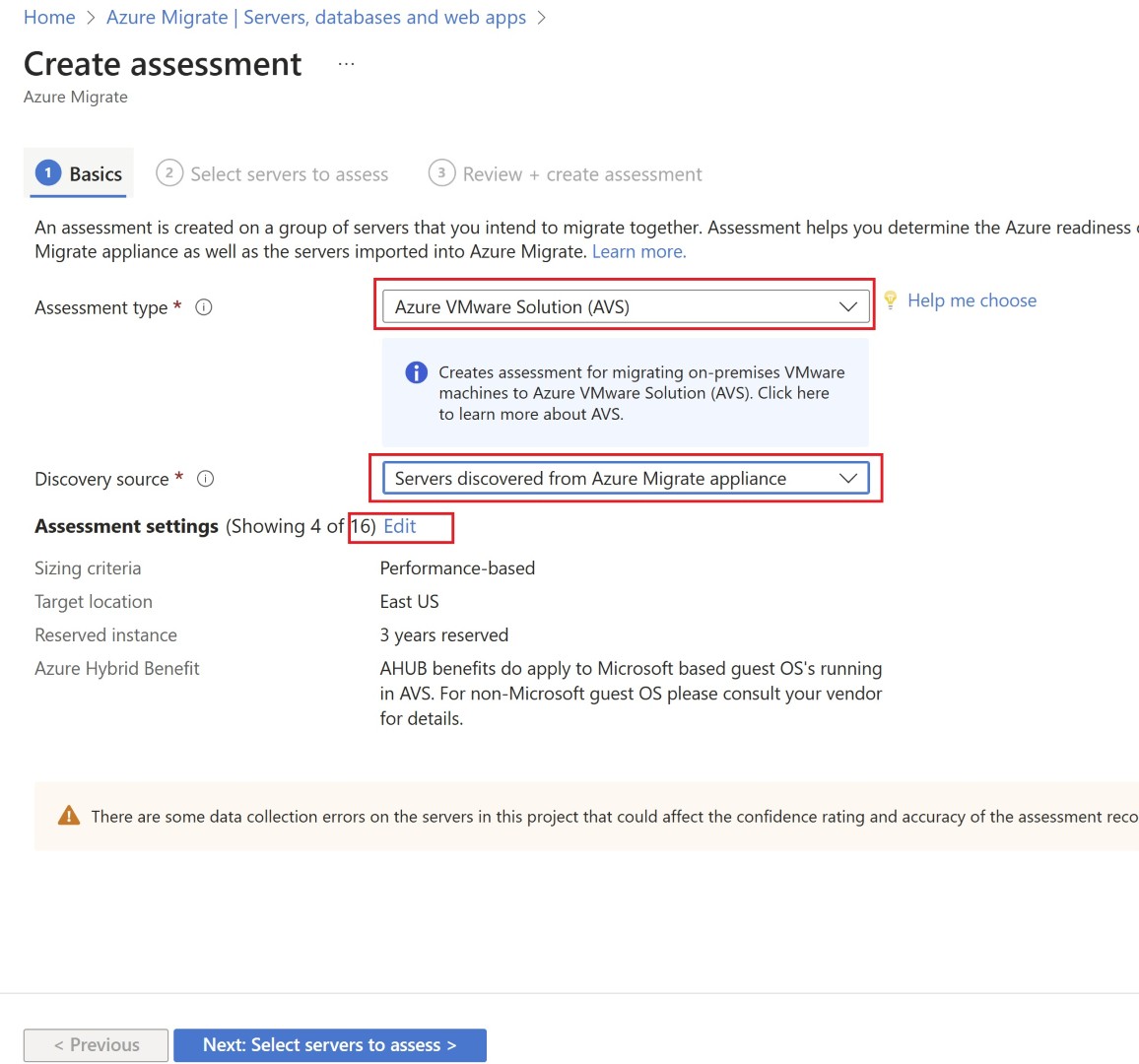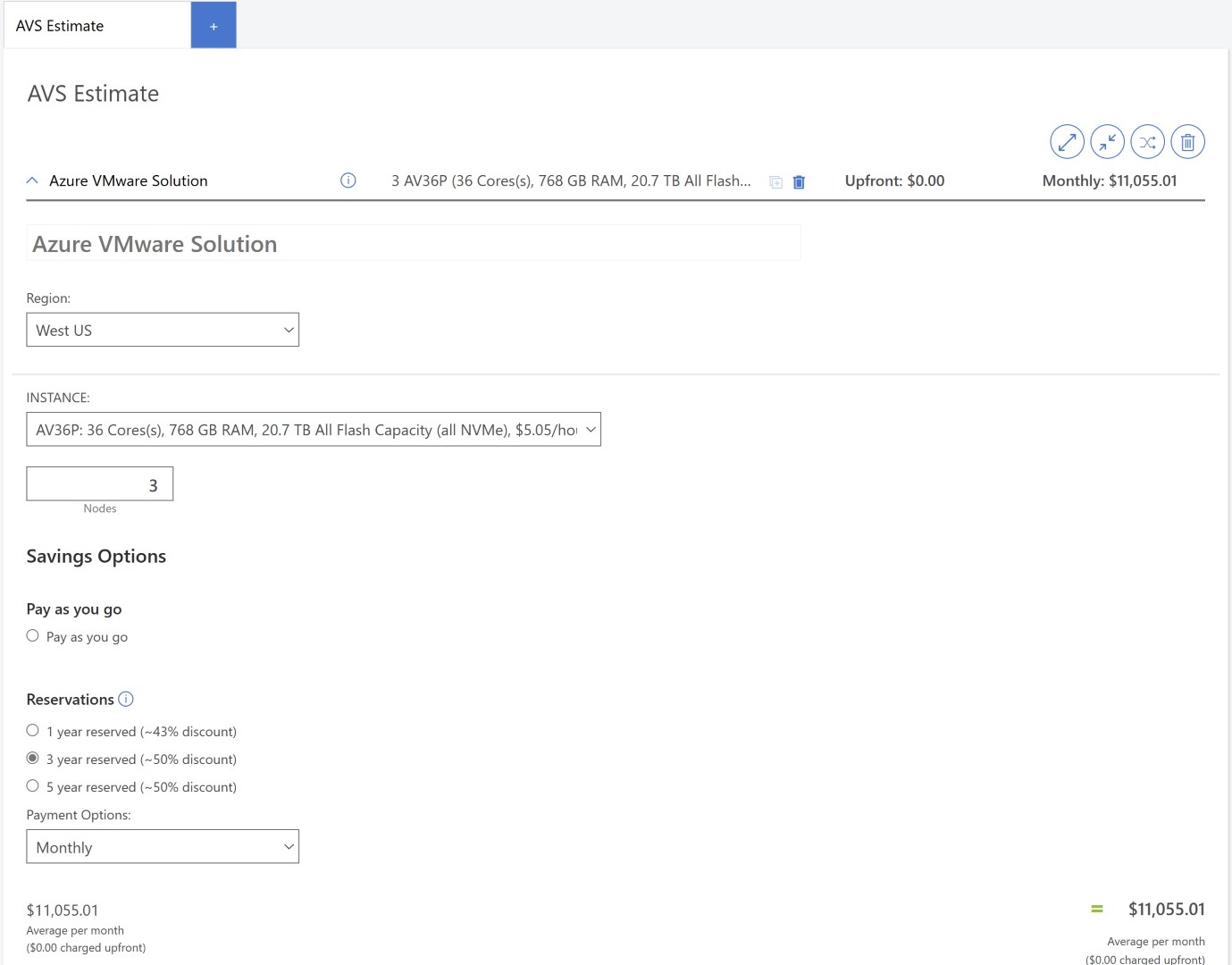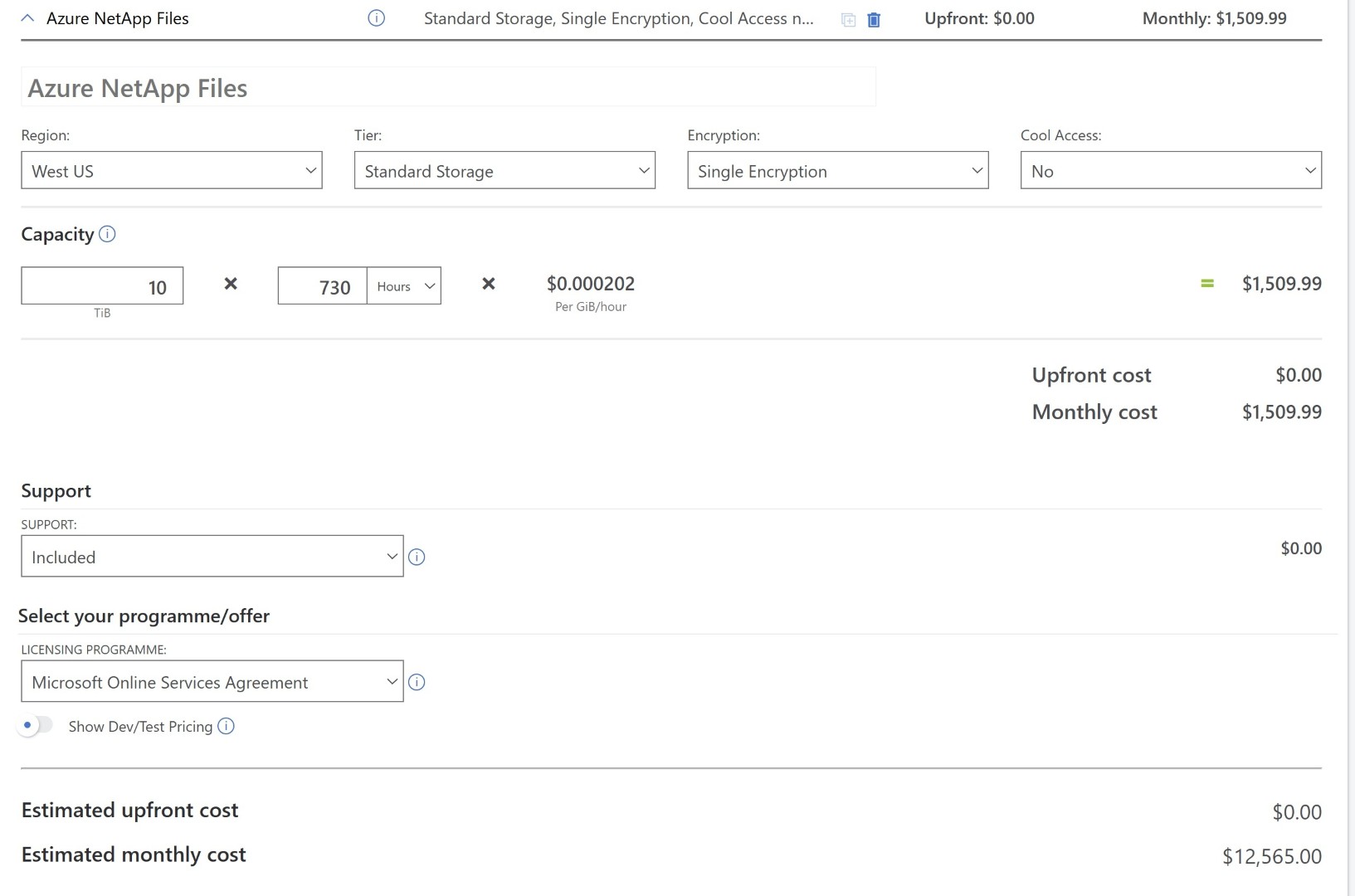클라우드 컴퓨팅 요구 사항에 가장 적합한 옵션을 선택하는 데 도움이 되는 가이드
소개
클라우드 컴퓨팅은 애플리케이션과 서비스를 실행하는 강력하고 유연한 방법이지만, 지출을 최적화하는 방법을 모르면 혼란스럽고 비용이 많이 들 수 있습니다. Azure는 사용 패턴과 요구 사항에 따라 Azure 비용을 절감할 수 있는 다양한 옵션을 제공합니다. 이 글에서는 이러한 두 가지 옵션, 즉 컴퓨팅과 예약을 위한 Azure 절감 플랜을 비교하고 대조해 보겠습니다. 또한, 이러한 옵션을 결합하여 절감 효과와 유연성을 극대화하는 방법도 설명합니다. 이 글을 끝까지 읽으면 이러한 옵션을 활용하여 클라우드 컴퓨팅 비용을 절감하고 비즈니스 목표를 달성하는 방법을 더 잘 이해하게 될 것입니다.
Azure 컴퓨팅 비용 절감 플랜이란 무엇인가요?
Azure 컴퓨팅 절약 플랜을 사용하면 1년 또는 3년 동안 고정 시간당 지출 약정을 하는 대가로 적격 컴퓨팅 리소스 사용량을 최대 65%까지 절약할 수 있습니다 [1] . 절약 플랜 혜택은 Azure Virtual Machines, Azure App Service, Azure Functions 프리미엄 플랜을 포함한 다양한 컴퓨팅 서비스에 제공됩니다. 여러 컴퓨팅 서비스에서 일관된 지출이 발생하는 경우 절약 플랜을 구매하면 전체 비용을 줄이는 데 도움이 될 수 있습니다.
저축 플랜 할인은 컴퓨팅 인프라 요금(예: CPU, RAM, 스토리지)에 적용되며 컴퓨팅 서비스와 리전의 조합에 따라 달라집니다. 할인 규모는 시간당 약정이 아닌 약정 기간에 따라 결정됩니다. 저축 플랜은 할인을 제공하지만 리소스의 런타임 상태에는 영향을 미치지 않습니다. 저축 플랜 할인은 소프트웨어 라이선스 비용(예: Windows, Windows Server 또는 SQL Server)에는 적용되지 않습니다. Azure Hybrid Benefit을 통해 이러한 라이선스 비용을 절감할 수 있습니다 [2] .
절약 플랜 모델에 따라 Azure는 적격 절약 플랜 적용 가능 사용량에 절약 플랜 할인을 적용합니다. 즉, 절약 플랜 할인율이 가장 높은 리소스의 사용량부터 할인됩니다. 할인된 금액은 시간당 약정에서 차감됩니다. 시간당 약정이 소진되면 남은 사용량은 종량제 요금으로 청구됩니다.
이것은 시간 단위 약정이므로, 한 시간 동안 약정을 완전히 소모할 만큼 적격 사용량이 충분하지 않더라도 해당 시간 전체 약정에 대한 요금이 청구됩니다.

그림 1 Azure 절약 계획: 절약을 위한 글로벌하고 유연하며 자동화된 경로
Azure 절약 계획 - 자동으로 유연하게 적용
저축 플랜은 서비스나 지역에 관계없이 가장 큰 혜택을 볼 수 있는 사용량에 자동으로 약정을 적용합니다 [3] . 저축 플랜 할인율이 가장 높은 리소스의 사용량이 항상 우선적으로 적용되므로 약정을 적극적으로 관리할 필요가 없습니다. 저축 플랜은 사용자의 사용 패턴에 따라 자동으로 조정됩니다.
절약 플랜은 특정 Azure 지역이나 컴퓨팅 서비스에 국한되지 않습니다. 절약 플랜은 Azure Virtual Machines 및 Azure App Service를 포함한 6개 이상의 컴퓨팅 서비스에 대한 비용 절감 혜택을 제공할 수 있습니다. 포함된 모든 컴퓨팅 서비스 목록을 보거나 Azure 가격 계산기 , Azure 가격 페이지 또는 Azure 가격표를 다운로드 하여 절약 플랜 가격을 확인하세요 .
저축 플랜은 전체 EA 청구 계정(등록) 또는 MCA 청구 프로필, 또는 특정 관리 그룹, 구독 또는 리소스 그룹 [4] 에 할인 혜택을 제공하도록 구성할 수 있습니다 . 언제든지 저축 플랜의 범위를 변경할 수 있습니다.
저축 플랜의 혜택 범위는 변경할 수 있지만, 시간당 약정이나 기간은 변경할 수 없습니다. 또한, 저축 플랜은 사용하는 컴퓨팅 서비스 변경에 따라 본질적으로 조정 가능하므로, 저축 플랜을 취소하거나 변경할 수 없습니다.

그림 2 하나의 계획, 모든 위치: 저축 계획의 글로벌 힘
Azure 예약이란 무엇인가요?
Azure 예약을 사용하면 1년, 3년 또는 5년 사용 약정을 하는 대가로 특정 Azure 리소스 사용량을 최대 72%까지 절약할 수 있습니다 [5] . 예약은 하루 종일 지속적으로 실행되고 하나의 Azure 지역에서 운영되며 향후 1년, 3년 또는 5년 동안 인프라 요구 사항을 실질적으로 변경할 것으로 예상되지 않는 워크로드에 이상적입니다. Azure 예약은 Azure Virtual Machines, Azure SQL 데이터베이스, Azure Cosmos DB를 포함한 다양한 Azure 서비스에 사용할 수 있습니다. 특정 지역에서 특정 Azure 제품을 일관되고 지속적으로 사용하는 경우 해당 제품에 대한 예약을 구매하면 전체 비용을 줄이는 데 도움이 될 수 있습니다.
예약 할인은 인프라 요금(예: CPU, RAM, 스토리지)에 적용되며 Azure 제품 및 지역에 따라 다릅니다. 할인 플랜과 마찬가지로 예약의 약정 기간에 따라 할인율이 결정됩니다. 예약은 할인을 제공하지만 리소스의 런타임 상태에는 영향을 미치지 않습니다. 예약 할인은 소프트웨어 라이선스 비용(예: Windows, Windows Server, SQL Server)에는 적용되지 않습니다. 그러나 Azure Hybrid Benefit을 통해 이러한 라이선스 비용을 절감할 수 있습니다.
예약을 구매하면 선불로 결제하고 특정 지역에서 특정 Azure 제품을 사용하도록 약정하게 됩니다. 매 시간마다 종량제 사용량이 평가되지만, 종량제 요금 대신 선불 예약 혜택이 일치하는 리소스에 자동으로 적용됩니다. 일치하는 예약이 모두 소진되면 남은 사용량은 절약 플랜 모델(사용 가능한 경우) 또는 종량제 요금으로 청구됩니다. 예약은 시간 단위 약정이므로, 한 시간 동안 예약을 완전히 소진할 만큼 적격 사용량이 충분하지 않더라도 매 시간 예약 요금이 발생합니다.
예약 제품은 동일한 유형의 예약인 경우 서로 호환됩니다. 예를 들어 Azure Dedicated Host, Azure VMware Solution, Azure Virtual Machines를 포함한 여러 컴퓨팅 예약을 한 번에 서로 교환할 수 있습니다 [6] . 또한 SQL Managed Instance 및 Elastic Pool을 포함한 여러 SQL Database 예약 유형을 서로 교환할 수 있습니다. 하지만 서로 다른 유형의 예약은 교환할 수 없습니다. 예를 들어 Azure Cosmos DB 예약을 SQL Database로 교환할 수 없습니다.
다른 지역의 유사한 유형의 예약을 교환하여 구매할 수도 있습니다. 예를 들어, 미국 서부 2 지역의 예약을 서유럽 지역의 예약으로 교환할 수 있습니다.
Azure Reservations – 예측 가능한 모든 워크로드에 대한 엄청난 할인
Azure 예약은 안정적이고 지속적으로 실행되는 워크로드에 가장 비용 절감 효과가 큰 옵션입니다. 예약 기간 동안 인프라 요구 사항이 변경되지 않을 것으로 예상되는 워크로드는 안정적인 것으로 간주됩니다. 하루 종일 실행되는 워크로드는 예약에 적합한 후보일 가능성이 높습니다. Azure 예약은 컴퓨팅, 데이터베이스, 분석을 포함한 여러 Azure 제품에 사용할 수 있습니다.
VM 예약은 가상 머신 예약 인스턴스(VM RI)라고도 합니다. 이러한 예약은 큰 할인과 함께 인스턴스 크기 유연성 [7] 을 통해 더 큰 유연성을 제공합니다 . 이 기능을 사용하면 예약 할인을 동일한 VM 크기 그룹의 다른 VM에 적용할 수 있습니다. 예를 들어 Standard_DS3_v2 VM 예약을 구매하는 경우 DSv2 시리즈의 다른 VM 크기(예: Standard_DS1_v2, Standard_DS2_v2, Standard_DS3_v2 또는 Standard_DS4_v2)에 예약을 적용하도록 선택할 수 있습니다. 인스턴스 크기 유연성에 대해 자세히 알아보려면 이 문서를 검토하세요.
앞으로 VM의 인스턴스 크기 유연성은 유지되지만, Azure Virtual Machine, Azure Dedicated Host 및 Azure App Service 예약에 대한 인스턴스 시리즈 또는 지역 교환은 더 이상 지원되지 않습니다. 자세한 내용은 이 문서를 참조하세요.
지원되는 모든 서비스 목록을 보거나 Azure 가격 계산기 , Azure 가격 페이지 또는 Azure 가격 목록을 다운로드 하여 예약 가격을 확인하세요 .
저축 플랜과 마찬가지로, 예약은 전체 EA 청구 계정 또는 MCA 청구 프로필, 또는 특정 관리 그룹, 구독 또는 리소스 그룹에 할인 혜택을 적용하도록 구성할 수 있습니다. 예약 범위는 언제든지 변경할 수 있습니다.
저축 계획과 예약을 비교하는 방법은?
이제 저축 계획과 예약이 무엇인지 설명했으니, 이 둘을 비교하고 대조하여 어떤 점이 다른지, 그리고 클라우드 컴퓨팅 지출을 최적화하는 데 어떻게 도움이 될 수 있는지 알아보겠습니다.
사용 패턴과 요구 사항에 따라 절약 플랜과 예약은 인프라 비용 절감에 도움이 되는 두 가지 옵션입니다 [8] . 두 옵션 모두 Azure Hybrid Benefit과 결합하여 Windows Server 및 SQL Server 라이선스 비용을 절감할 수 있습니다. 하지만 두 옵션 중 하나를 선택하기 전에 고려해야 할 주요 차이점도 있습니다.
| 전세 | 저축 계획 | |
| 목표 | 계획된 변경 없이 동일한 지역에서 지속적으로 실행되는 작업 부하 | 다양한 지역에서 실행되는 동적/진화하는 워크로드 |
| 선불제 대비 절감 효과 | 최대 72%까지 절약하세요 | 최대 65%까지 절약하세요 |
| 약속 | 특정 지역에서 특정 제품 사용(예: 일본 동부의 D2v4 VM) | 시간당 금액(예: $5/시간) |
| 혜택 명령 | 먼저 적용됨 | 적용된 |
| 용어 | 1년, 3년 또는 5년 | 1년 또는 3년 |
| 결제 옵션 | 선불 또는 월별 | 선불 또는 월별 |
| 수정 사항 |
|
취소 불가 |
1 예약 교환 정책의 향후 변경 사항에 따라
2 회전 12개월 기간 동안 50,000달러 USD에 적용됨
예시
이 섹션에서는 다양한 시나리오와 가정을 기반으로 Azure 예약과 Savings Plan for Compute를 비교하는 두 가지 예를 제시합니다. 이 예는 각 옵션의 잠재적인 절감 효과와 장단점, 그리고 결정에 영향을 미치는 요소를 보여주기 위한 것입니다. 두 예 모두 워크로드가 하루 24시간 운영된다고 가정합니다. 다음 예에 사용된 가격은 2024년 5월 기준 Azure 가격 계산기에서 가져온 것입니다.
예 1: 예약
이 예시에서는 워크로드가 미국 동부와 미국 서부, 두 지역에 분산되어 있습니다. 워크로드는 각 지역에 있는 가상 머신 인스턴스 2개와 Azure SQL 데이터베이스 2개로 구동되며, 이러한 리소스에는 계획된 변경 사항이 없습니다. 3년 기간으로 예약을 구매하면 가장 큰 절감 효과를 얻을 수 있습니다.
| 예약 예상 | ||||||
| 서비스 유형 | 지역 | 설명 | PAYG 월 비용 | 3년 할인 |
월별 비용 | 월별 저축 |
| 가상 머신 | 미국 동부 | 4 D2 v3(2개 vCPU, 8GB RAM)(3년 예약), Windows(라이선스 포함), OS 전용; 0개 관리 디스크 - S4; 지역 간 전송 유형, 미국 동부에서 미국 서부로의 5GB 아웃바운드 데이터 전송 | 548.96달러 | 31% | 376.18달러 | 172.78달러 |
| 가상 머신 | 미국 서부 | 4 D2 v3(2개 vCPU, 8GB RAM)(3년 예약), Windows(라이선스 포함), OS 전용; 0개 관리 디스크 - S4; 지역 간 전송 유형, 미국 서부에서 미국 동부로의 5GB 아웃바운드 데이터 전송 | 610.28달러 | 34% | 416.86달러 | 193.42달러 |
| Azure SQL 데이터베이스 | 미국 동부 | 단일 데이터베이스, vCore, 일반 용도, 프로비저닝됨, 표준 시리즈(Gen 5), 로컬 중복, 2-2 vCore 인스턴스, 3년 예약, 32GB 스토리지, RA-GRS 백업 스토리지 중복성, 0GB 시점 복원, 0 x 5GB 장기 보존 | 745.94달러 | 35% | 501.46달러 | 244.48달러 |
| Azure SQL 데이터베이스 | 미국 서부 | 단일 데이터베이스, vCore, 일반 용도, 프로비저닝됨, 표준 시리즈(Gen 5), 로컬 중복, 2-2 vCore 인스턴스, 3년 예약, 32GB 스토리지, RA-GRS 백업 스토리지 중복성, 0GB 시점 복원, 0 x 5GB 장기 보존 | 792.30달러 | 35% | 523.38달러 | 268.93달러 |
| 총 | 2,697.49달러 | 1,817.88달러 | 879.61달러 | |||
| 부인 성명 | ||||||
| 표시된 모든 가격은 미국 달러(USD)로 표시됩니다. 이는 견적이 아닌 추정치입니다. 최신 가격 정보는 https://azure.microsoft.com/pricing/calculator 에서 확인하세요 . | ||||||
| 이 추정치는 2024년 5월 21일 오전 8시 52분 39초 UTC에 작성되었습니다. | ||||||
예약은 단일 리전에만 적용되고, 두 개의 서로 다른 리전에 컴퓨팅 및 데이터베이스 서비스가 있으므로 총 4개의 예약이 필요합니다. 4개의 예약을 통해 월 $879.61의 비용을 절감할 수 있으며, 이는 3년 동안 $31,665.96의 비용 절감으로 이어집니다.
예 2: 컴퓨팅을 위한 절약 계획
이 시나리오에서 저희 고객사인 Fabrikam은 미국 서부, 서유럽, 동아시아의 세 개 주요 지역에 운영 시스템을 구축했습니다. 각 지역은 핵심 워크로드를 전담하는 리소스를 보유하고 있어 지속적인 운영을 보장합니다.
각 지역에서 현지 업무 시간을 기준으로 8시간 동안 운영되도록 설계된 워크로드를 통해 Fabrikam은 각 지역의 비수기 시간대에 따른 비용 절감 효과를 누릴 수 있습니다. 이러한 접근 방식은 리소스 활용도를 최적화할 뿐만 아니라 "태양을 따라가는" 모델에 부합하여 전 세계 고객에게 원활한 서비스를 제공합니다.
Fabrikam은 컴퓨팅 절감 플랜을 도입함으로써 1년 또는 3년 동안 일정한 양의 컴퓨팅 사용량(시간당 $ 단위)을 확보합니다. 그 대가로 종량제 요금제 대비 상당한 할인 혜택을 받습니다. 다음 예시는 Fabrikam이 미국 서부, 서유럽, 동아시아에서 운영되는 앱 서비스를 포괄하는 컴퓨팅 절감 플랜을 어떻게 활용하는지 보여줍니다.
| 저축 계획 추정 | |||||||
| 서비스 유형 | 지역 | 설명 | 8시간/일 급여 | 3년 할인 | 월 비용 8시간/일 | 월별 저축 | 시간당 약속 |
| 앱 서비스 | 미국 서부 | 프리미엄 V3 티어; 1 P3V3(8코어, 32GB RAM, 250GB 스토리지); 3년 절약 플랜; Windows OS; 0 SNI SSL 연결; 0 IP SSL 연결; 0 사용자 정의 도메인; 0 표준 SLL 인증서; 0 와일드카드 SSL 인증서 | 42.88달러 | 24% | 32.80달러 | 10.08달러 | 1.025달러 |
| 앱 서비스 | 서유럽 | 프리미엄 V3 티어; 1 P3V3(8코어, 32GB RAM, 250GB 스토리지); 3년 절약 플랜; Windows OS; 0 SNI SSL 연결; 0 IP SSL 연결; 0 사용자 정의 도메인; 0 표준 SLL 인증서; 0 와일드카드 SSL 인증서 | 43.26달러 | 24% | 33.02달러 | 10.24달러 | 1.032달러 |
| 앱 서비스 | 동아시아 | 프리미엄 V3 티어; 1 P3V3(8코어, 32GB RAM, 250GB 스토리지); 3년 절약 플랜; Windows OS; 0 SNI SSL 연결; 0 IP SSL 연결; 0 사용자 정의 도메인; 0 표준 SLL 인증서; 0 와일드카드 SSL 인증서 | 48.26달러 | 26% | 35.74달러 | 12.51달러 | 1.117달러 |
| 총 | 3,066.00달러 | 2,317.01달러 | 32.83달러 | 1.025달러 | |||
| 부인 성명 | |||||||
| 표시된 모든 가격은 미국 달러(USD)로 표시됩니다. 이는 견적이 아닌 추정치입니다. 최신 가격 정보는 https://azure.microsoft.com/pricing/calculator에서 확인하세요. | |||||||
| 이 추정치는 2024년 6월 19일 오후 12시 22분 34초 UTC에 작성되었습니다. | |||||||
예시에서는 종량제 요금과 지역별 할인율이 약간씩 다르다는 것을 보여줍니다. 미국 서부 지역은 일반적으로 앱 서비스 요금이 가장 낮은 반면, 동아시아 지역은 26%로 다른 지역보다 할인율이 높습니다(24%). 저희 워크로드는 지역별로 8시간 동안 운영되며, 지역 간 전환 시 할인 혜택을 순환적으로 적용합니다. 사용량 부족을 방지하려면 최소 시간당 약정이 적용되는 단일 할인 플랜을 선택하는 것이 가장 좋습니다. 따라서 Compute Savings Plan에 시간당 $1.205의 요금을 선택하게 됩니다. 수동 계산은 필요하지 않습니다. Azure Advisor가 사용자의 요구 사항에 맞는 적절한 기준을 추천해 드리며, 구매 시 과거 데이터를 기반으로 시간당 약정 제안이 표시됩니다.
이 사례는 전략적 계획과 컴퓨팅 절감 계획(Savings Plans for Compute)을 활용하여 달성할 수 있는 재정적 이점과 운영 효율성을 보여줍니다. "태양 추적(Follow the Sun)" 모델을 효과적으로 구현하여 지속적인 글로벌 운영을 유지하면서 절감 효과를 극대화하는 방법을 보여줍니다.
저축 계획과 예약을 모두 활용하는 방법
- 다음 순서대로 Azure Advisor 권장 사항을 활용하세요.
- 적절한 크기/종료 VM
- 이전에 구매한 미활용 예약을 교환하세요.
- VM, 전용 호스트 및 앱 서비스 예약을 절약 플랜으로 교환하세요
- 추천에 따라 구매 예약
- 추천에 따른 구매 저축 계획
Microsoft Azure Consumption Commitment(MACC) 할인을 고려하는 방법은 무엇인가요?
많은 기업 고객은 기존 Microsoft Azure Consumption Commitment(MACC) 할인 [9] 을 받았을 수 있습니다 . 이는 일반적으로 1년 또는 3년 동안 Azure 서비스에 특정 금액을 지출하겠다는 약정에 따라 적용되는 할인입니다. MACC 할인은 적격 Azure 서비스의 종량제 요금에 적용되며 약정 수준 및 계약 조건에 따라 달라질 수 있습니다. 그러나 MACC 할인은 저축 플랜 또는 예약 할인과 중복 적용되지 않습니다. 즉, 저축 플랜이나 예약을 구매하는 경우 저축 플랜 또는 예약 할인에 MACC 할인이 추가되지 않습니다. 대신 두 할인 중 더 높은 할인이 적용됩니다.
요약
이 글에서는 Azure 비용 절감에 도움이 되는 두 가지 옵션인 컴퓨팅 및 예약에 대한 Azure 절감 플랜을 비교하고 대조해 보았습니다. 주요 내용은 다음과 같습니다.
- 저축 플랜은 컴퓨팅 서비스의 인프라 비용을 절감할 수 있는 유연하고 포괄적인 방법을 제공합니다. 적격 컴퓨팅 서비스, 인스턴스 유형 또는 리전에 자동으로 적용되며, 요구 사항에 따라 변경할 수 있습니다. 전체 청구 범위에 걸쳐 저축 플랜을 공유하고 언제든지 범위를 변경할 수 있습니다. 약정 금액은 언제든지 늘릴 수 있지만, 약정 기간 종료 전에는 약정 금액을 줄이거나 취소할 수 없습니다. 저축 플랜은 최대 65%까지 절감할 수 있으며, Azure 하이브리드 혜택과 결합하여 라이선스 비용을 추가로 절감할 수 있습니다.
- 예약은 서비스 인프라 비용을 절감할 수 있는 예측 가능하고 안정적인 방법입니다. 선불 비용을 지불하면 특정 서비스, 인스턴스 유형 및 지역을 예약할 수 있습니다. 예약은 언제든지 취소하거나 변경할 수 있으며, 12개월 롤링 윈도우당 미화 50,000달러의 한도가 적용됩니다. 또한, 동일한 패밀리 내에서 인스턴스 크기를 변경하거나 동일한 지리적 영역 내에서 지역을 변경하여 예약을 수정할 수도 있습니다. 단, 컴퓨팅 서비스가 아닌 서비스로 예약을 변경하는 것은 특정 조건에서만 가능합니다. 예약을 사용하면 최대 72%까지 비용을 절감할 수 있으며, Azure 하이브리드 혜택과 결합하여 라이선스 비용을 추가로 절감할 수 있습니다.
- 예약은 컴퓨팅 외에도 더 많은 서비스를 포괄하지만, 특정 서비스, 인스턴스 유형 및 리전에 종속되기 때문에 절약 플랜보다 유연성이 떨어집니다. 예약은 안정적이고 예측 가능하며 계획된 변경 사항이 없는 워크로드에 적합합니다.
- 예약 인스턴스는 가상 머신을 대상으로 하는 예약 유형입니다. 특정 VM 크기와 지역을 예약하고 VM 비용 할인을 받을 수 있습니다. 예약 인스턴스는 웹 서버, 데이터베이스 또는 일괄 처리와 같이 지속적으로 또는 장기간 실행되는 워크로드에 적합합니다.
- 절약 플랜과 예약을 결합하여 절약 효과와 유연성을 극대화할 수 있습니다. 예약은 안정적이고 예측 가능한 워크로드에 사용할 수 있으며, 절약 플랜은 동적이고 변화하는 워크로드에 적합합니다. Azure는 예약 할인을 먼저 적용한 후, 절약 플랜 약정이 완전히 소진될 때까지 남은 사용량에 대해 절약 플랜 할인을 자동으로 적용합니다. 두 옵션 모두 적용되지 않는 사용량은 종량제 요금으로 청구됩니다. 사용하는 서비스, 인스턴스 유형 및 지역에 따라 다양한 유형의 예약 및 절약 플랜을 조합하여 사용할 수 있습니다.
- Microsoft Azure Consumption Commitment(MACC) 할인이 있다면, 할인 플랜이나 예약 옵션을 비교할 때 함께 고려해 보세요. MACC 할인은 적격 Azure 서비스의 종량제 요금에 적용되며, 약정 수준 및 계약 조건에 따라 달라질 수 있습니다. 단, MACC 할인은 Savings Plan이나 예약 할인과 중복 적용되지 않습니다. Savings Plan이나 예약 중 하나를 구매하는 경우, 두 할인 중 더 높은 할인을 받게 됩니다.
이 글이 Azure 컴퓨팅 및 예약 절감 플랜을 선택하는 방법과 이를 결합하여 클라우드 컴퓨팅 지출을 최적화하는 방법을 이해하는 데 도움이 되었기를 바랍니다. 질문, 의견 또는 공유하고 싶은 경험이 있으시면 아래에 댓글을 남겨주세요. 여러분의 의견을 기다립니다.
참고문헌
[1] Azure 컴퓨팅 절감 계획이란 무엇입니까? - Microsoft Cost Management | Microsoft Learn
[2] Windows Server용 Azure Hybrid Benefit | Microsoft Learn
[3] Azure 절약 계획 할인이 적용되는 방식 - Microsoft Cost Management | Microsoft Learn
[4] 저축 계획 범위 - Microsoft Cost Management | Microsoft Learn
[5] Azure 예약이란 무엇입니까? - Microsoft Cost Management | Microsoft Learn
[6] Azure Reservations에 대한 셀프 서비스 교환 및 환불 - Microsoft Cost Management | Microsoft Learn
[7] 가상 머신 크기 유연성 -Azure Reserved VM Instances - Azure Virtual Machines | Microsoft Learn
[8] 저축 계획과 예약 중에서 결정 - Microsoft Cost Management | Microsoft Learn
[9] Microsoft Azure 사용 약정(MACC) 추적 - Microsoft 비용 관리 | Microsoft Learn
'IT이야기 > Azure' 카테고리의 다른 글
| Azure에서 합병, 인수 및 이동을 처리하는 방법 (4) | 2025.08.07 |
|---|---|
| 마이그레이션을 위해 Azure VMware Solution 노드의 크기를 조정하는 방법 (3) | 2025.08.07 |
| VMware HCX를 사용하여 Azure VMware 솔루션으로 워크로드 마이그레이션: 실용 가이드 (5) | 2025.07.02 |
| VMware HCX란 무엇이며 어떻게 작동합니까? (1) | 2025.06.10 |
| HCX – 서비스 메시를 생성하고 사이트를 연결하는 방법 (2) | 2025.06.10 |























